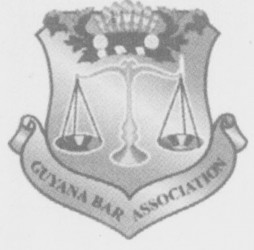(A fortnightly column by the Guyana Bar Association)
Today we continue our discussion on the Bar Association’s concerns about persons in custody which we began in our last column published on February 12. In that column we indicated that we would address the question of persons held as “prisoners”, the singular form of which is defined in the Prisons Act as “any person whether convicted or not under detention in any prison”. The Prisons Act describes a prison as any house, building, enclosure or place declared to be a prison under section 3 of the Act by the Minister responsible for prisons who currently is the Minister of Public Security.

There is no record of any of these places or of any Police Stations being designated as a lock-up although the term is widely used by those associated with Police Stations to refer to the place in the Police Stations where persons are held as suspects pending further investigation or charge. There is some concern in the profession and no doubt in the public that while in any year a large number of persons are detained in these lock-ups, little is known about who is detained in them, for what reasons, the circumstances they are held in and the conditions they experience.
Police lock-ups appear to be a grey area in the Guyana law enforcement system and operate with minimal oversight. Not unusually, they are known both in Guyana and abroad for overcrowding, lack of access to health and psychological care, vulnerable persons being inappropriately held, abuse of and violence on and between detainees, poor sanitary and degrading conditions, lack of adequate accommodation, etc.
The Bar Association has also received reports of the sometimes unorthodox techniques used by investigating Police Officers in their dealings with persons in their custody, whether as suspects or simply persons who can assist the Police in their investigations. In one case that reached the Courts, an award of $6.5 million was awarded against the State for the torture by Police of a youth at the Leonora Police Station during the period when Mr. Seelall Persaud served as the Crime Chief.
There has been nothing as high profile since although the Bar Association from time to time receives reports from members of the profession about the conditions of the lock-ups. Very recently the Stabroek News carried an article in which an attorney-at-law told the Magistrate that two children were placed in the lock-ups along with their mother who was arrested for ganja.
Unfortunately, the Bar Association’s effort to follow-up on the complaints by making visits to lock-ups have been rebuffed by the Police on the grounds that “the visits will disrupt operations at the Police Stations.” It is hard to see how a pre-arranged visit can disrupt operations and the Bar Association therefore takes it very seriously that the Police would dismissively deny access to these lock-ups. After all, a police lock-up is a temporary facility used to hold suspects waiting for interrogation, arrest processing, transfer to jail or for other administrative procedures. In Guyana, every person is innocent until proven guilty and no Police should be allowed to treat persons otherwise.
Across several countries, police lock-up inspection reports document unsuitable detention conditions and treatments of detainees in police lock-ups including: overcrowding and long stays for persons in police cells, substandard physical conditions and design faults, lack of access to health and mental health care, vulnerable persons being inappropriately held in police cells, abuse of detainees, poor sanitary conditions, lack of adequate accommodation and juveniles being held with adults.
The Bar Association considers it necessary that there be a formal system for monitoring the conditions of detention in police lock-ups for three main reasons: first, persons in police custody are mostly pre-charge suspects. Second, having temporarily lost their freedom, detainees have limited recourse to any remedy or assistance. Third, as human beings, their basic human rights have to be upheld and protected. Fourth, police view themselves less in the role of custodians than in that of law enforcers.
The Bar Association will continue to regard the Commissioner of Police’s refusal of its request as unfortunate, wrong and reversible. It sends a wrong signal that the Police are unwilling to open itself and its operations to scrutiny. Such approach has no place within Guyana’s Constitution or good Police practice. It not only does not win friends but leads to suspicion.





